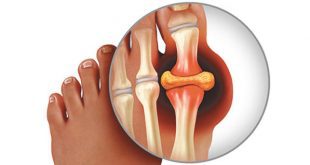

Periodontal disease, also known as gum disease, is the chronic infection of the soft tissue around the teeth caused by plaque producing bacteria. The gums hold the teeth in place. As the gums become infected, they loosen their hold on the teeth and pockets are formed. These pockets collect debris and cause more infection and bone loss to the tooth. Gum disease is infectious and contagious. It can spread from tooth to tooth in the mouth and from one person’s mouth to another through saliva.
As with other diseases, prevention is key to good oral health. It is important for everyone to practice diligent, thorough, and proper oral care by scheduling check ups every six months. At which time, your dentist will be able to detect and treat any signs of periodontal disease before symptoms begin to show and the damage is done. As mentioned earlier, most people do not know they have periodontal disease until they begin suffering from any combination of the following signs:
- Chronic bad breath
- Red or swollen gums
- Bleeding gums especially after tooth brushing
- Tender or sore gums
- Loose or shifting teeth
- Receding gums
- Sensitive teeth
If you have been diagnosed with periodontal disease, there are various treatment plans your dentist may recommend depending on the severity of your case. The most important action is meticulous at home daily oral care. Teeth must be brushed twice or more times each day for at least two minutes and flossed at least once per day. Other treatments include oral rinses, periodontal cleanings, and sometimes surgery.
Traditional periodontal surgery involves cutting and suturing of the gums and recovery time can be long and painful. With the advancement of modern laser technology, there is an alternative. Joseph H. Farag, DMD offers a better alternative for patients battling periodontal disease. Dr. Farag offers patients laser-assisted new attachment procedure (LANAP™) which is a no-cut, no-sew procedure to treat mild to advanced periodontal disease. The advancements in laser surgery techniques, have made treating periodontal faster and less painful. LANAP™ is much less invasive than traditional surgery, allowing patients to return to work the next day if desired.
Even with the benefits of LANAP™ it is obviously best to practice good oral care. The most important preventative measure to avoid the insidious gum disease is to take excellent care of your teeth. Proper cleaning at least twice a day is imperative. The goal is to keep the bacteria that cause the plaque at very low levels.
If your gums are painful, red, or swollen don’t ignore the signs; make an appointment today that may save your teeth and gums. Treating periodontal disease sooner is always better than later.
Benefits of LANAP™
EASY – LANAP™ is about as EASY as erasing a blackboard – unlike older techniques, there is no cutting and no suturing of the gums.
MINIMAL DISCOMFORT – Both during and post procedure, the patient experiences very minimal discomfort with LANAP™ than with prior standard surgery techniques.
SHORTER PROCEDURE TIME – It takes less time to complete LANAP™ than traditional surgery. Typically it takes is two 2-hour visits to the office and two follow up visits. Traditional surgery requires four sessions of about one hour each, with subsequent visits for suture removal and additional check-ups.
LESS GUM LOSS – LANAP™ minimizes the loss of gum tissue, traditional surgery often involves involves removing a significant amount of gum tissue. This tissue loss can lead to sensitive teeth since your roots are exposed. Also, if the treatment needs to be performed again in the future, you have not removed the bone and gums during the first LANAP™ treatment. Typically with LANAP™, any gum tissue shrinkage is actually due to reduced swelling of the area that was previously diseased and inflamed.
SHORT RECOVERY – Many patients fully recover from LANAP™ within 24 hours. In most cases, patients feel just fine post surgery and daily activities are not interrupted. On the other hand, recovery after traditional surgery can take up to 4 weeks during which patients can experience considerable pain and swelling.
SAFE – LANAP™ with the PerioLase is SAFE for patients with health concerns such as diabetes, heart disease, high blood pressure or those taking medications such as Coumadin or Cyclosporine.
Dr. Joseph Farag – Port Charlotte Dentalcare
941.764.9555
3441 Conway Blvd, Port Charlotte
www.Drfarag.com
 Southwest Florida's Health and Wellness Magazine Health and Wellness Articles
Southwest Florida's Health and Wellness Magazine Health and Wellness Articles

